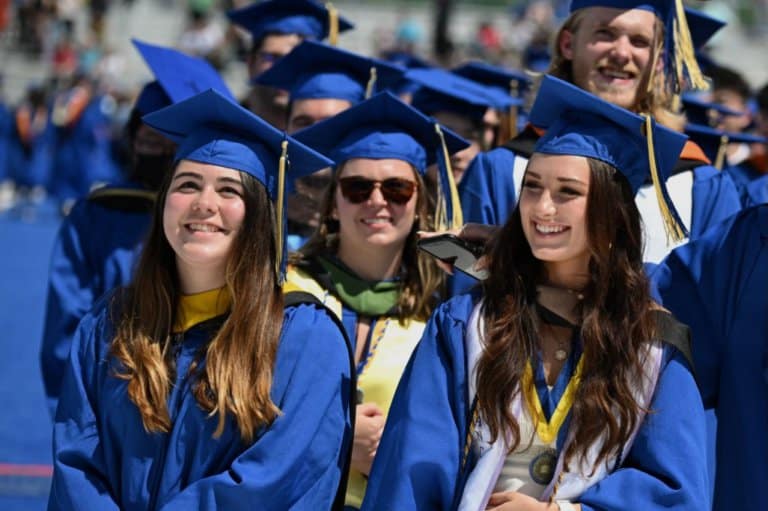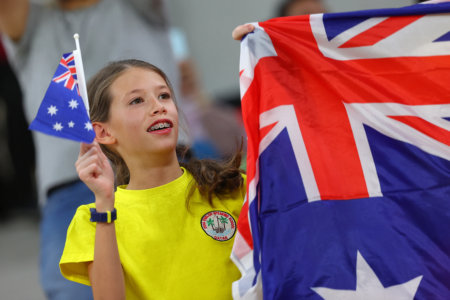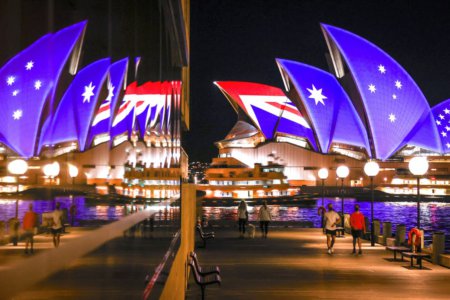
Can you study in Australia for cheap? The answer is yes.
Every year, Australia attracts thousands of students from around the world. It is the third most popular study abroad destination, behind the US and the UK.
This is mostly thanks to its world-class unis and post-study work options. The country is home to over 43 universities of which 36 institutions were ranked in the QS World University Rankings for 2021.
This year alone, these unis welcomed over 550,409 international students — and not all of them have big budgets to splash.
From tuition fees, visa costs, living expenses, and travel and accommodation costs, it can seem almost impossible to study in Australia for cheap.
The average cost of higher education here ranges from 20,000 to 45,000 Australian dollars annually. Add the average cost of living between A$1,400 and A$2,500 a month, and it can be too much for an international student to bear.
Thankfully, there are many ways to find the most affordable options from the start to the end of your Australian education.
Unsure where to start? Don’t worry, we’ve got you covered.
Here is the whole process, broken down into manageable steps to guide you as you plan to study in Australia for cheap:
1. Make sure you meet the requirements to study in Australia
First things first, to embark on your study abroad journey in Australia, there are a number of requirements you will first need to fulfil.
You need to have completed a secondary school qualification equivalent to an Australian Year 12 certificate.
If you are coming from a country where English is not your native language, you ‘ll need to take an English language proficiency test too. The most common is either IELTS or TOEFL. For either test you will need to provide evidence of scores as the following:
- IELTS: overall score of 6.0, no band less than 6.0
- TOEFL: overall score of 67, section scores no less than:
Listening: 12
Speaking: 18
Reading: 15
Writing: 21
To save money, try to get these scores on your first try. For every retake, you have to pay the full fee again.
2. Decide on a course and find universities
Next, dig deep and ask yourself what do you love doing. This should give you an idea of the type of subjects you’re into. Then, find and list the universities that offer these subjects and their respective fees.
Luckily, there are a number of universities in Australia that offer more affordable programmes.
Here are two examples:
- Federation University Australia: The annual fee for the Bachelor of Arts is A$15,750
- Charles Sturt University: international students only pay as low as A$21,280 annually to pursue a bachelor’s degree
Tuition fees vary depending on the course. Pursuing a course in law and medicine will cost more than that in arts, humanities and nursing as the former is more expensive to provide.
View this post on Instagram
3. Find scholarships and financial aid services available
Each scholarship differs depending on the eligibility and criteria. Some scholarships cover just tuition fees, while others cover tuition, living, and travelling expenses.
Here are some to keep your eye on this year:
- Australia Awards Scholarship by the Department of Foreign Affairs and Trade of Australia: Full scholarship open to those from developing countries seeking undergraduate and postgraduate degrees.
- Macquarie Vice-Chancellor’s International Scholarship: Partial tuition fee scholarship valued up to A$10,000.
4. Find out the admission requirements of the university
Once you have chosen your course and narrowed it down to a number of universities, it is time to ensure you meet the requirements before applying.
Some universities may ask for more specific documents, but generally, applicants will need to compile these documents:
- Your proof of English language proficiency
- Academic transcripts. If you are still completing school, you can usually provide evidence of your most recent marks until it is possible to provide your final results
- Letter of recommendation
- Work experience, if you have any
Scan all of them so you can submit them digitally and save on postage fees. No scanner? Head to the app store for apps that turn your phone camera into a scanner.
5. Apply to universities
Applying to an Australian university can be done through the universities’ websites directly.
Apart from the documents listed above, you’ll likely need to submit a personal statement as well as fill out your qualifications, personal details and past experiences.

Balancing studies and expenses can be overwhelming for international students. Source: Brandon Bell / AFP
6. Apply for scholarships
While there are many scholarships available, remember that winning one isn’t as easy as it seems.
It’s a numbers games where the more you apply to, the higher your chances of getting one.
So, don’t limit your search to educational institutions as colleges, the Australian Government, international organisations and government departments may also offer scholarships.
Many faculties offer their own scholarships as well.
Each scholarship will have a different deadline so keep an eye out for that when applying. You don’t want to miss it.
7. Apply for a visa
Once accepted to an Australian university, you can begin the process of applying for your visa.
The most common student visa is the (subclass 500) which allows you to live, work and study in Australia for a maximum of five years, all within the specifications of your course.
The student visa fees start from A$650 per visa application. To apply you can go through the Australian immigration website or an education agent, however, latter will come with a fee.
Here’s what you need you will need to prepare to apply for a visa:
- Letter of offer
- Confirmation of Enrolment (CoE): A document that will be issued by your education provider that verifies your enrolment in a specific course
- English language proficiency: Citizenship from an English-speaking country or IELTS/TOEFL scores.
- Academic qualifications
- Health and Character requirements – additional forms required
- Proof of insurance through Overseas Student Health Cover (OSHC)
- Proof of financial stability – resources to cover return airfare, tuition costs, and a total of A$18,610 per year must be documented. Loans, parent financial history, and bank accounts are considered as evidence.
8. Find out more about your new city and housing
Now that you have got your offer letter and visa sorted, it is time to find a place to live.
It’s important you follow this step. If you book a room earlier before getting your offer and visa, your deposit will likely be forfeited.
There are many factors that influence the cost of housing. One big factor would be the location of your university. Those in big cities such as Sydney are set to be more expensive as compared to other areas.
Canberra, the capital, is the most affordable (and one of the most liveable in the world too).
Living on campus is usually more expensive. This is because everything, from heating to even food, will likely be included in the fees, which range between A$200 and $750, including utilities.
As they’re expensive and limited in numbers, many international students in Australia live off-campus.
The cheapest rent is in regional Australia, where a house goes for as low as A$180 per week. At Murweh in Queensland, it costs A$198 per week and at Port Pirie in South Australia, it’s $215 per week.
Here’s a list of websites you can search for shared or private accommodation:
9. Plan your journey
There many airports in Australia that serve international and local flights. Your new university will be able to advise you which is the best airport to fly to when you arrive in Australia.
As flights can be rather expensive, there are a few websites to check out that offer cheaper flights for international students. This includes Kayak and ticket2
And finally, when you have arrived in The Land Down Under, it is time to travel from the airport directly to your booked accommodation.
Before leaving your home it would be a good idea to research transport options so you don’t need to worry about transportation after a long flight.
There are several ways to travel from the airport. Some unis offer free airport shuttle. Alternatively, use Uber, which will likely be cheaper than a taxi. Better still, take a bus or train.
Students can also apply for cards to travel around on public transport, ultimately reducing travel costs.
For example, in Canberra, concession cards for public transport travel are available, reducing costs to A$1.61 per trip and capping at A$4.80 per day.
10. Adjust your lifestyle
Life is sweet in Australia, even if you’re on a budget.
While eating out in Australia is yummy, it can cost up to A$20 for one meal alone.
But we all deserve a treat some time. A breakfast or lunch will be best for this, rather than dinner, as they’re typically cheaper.
Cooking at home is still the cheapest option. You can get groceries from affordable supermarkets such as Coles, Woolworths, or ALDI.
But if you still need some extra cash, the great thing about studying in Australia is that international students are allowed to work part-time while completing their studies.
Based on your (subclass 500) visa, you are typically allowed to work a maximum of 40 hours per fortnight during your semester and unlimited hours during study breaks.
However, the Australian government has temporarily allowed international students to work over the normal limit across all sectors.
Students in Australia can earn around A$30 an hour’s work.
Although this varies depending on the type of job, Australia has been listed as the ninth-highest average wage in the world in 2019, according to the Organisation for Economic Co-operation and Development.










